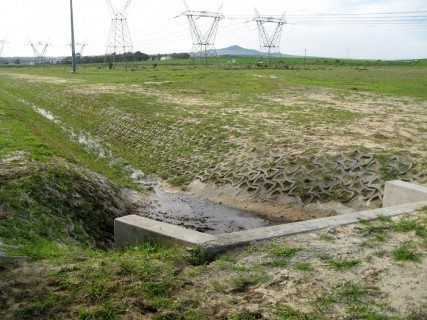The world has to act soon enough to arrest the effects of soil erosion on food security and shelter, Holger Rust, founder and CEO of Terraforce, tells Construction Review.
The magnitude of the world’s indifference to soil erosion, which is mostly caused by bad farming practices and, in recent years, explosive urban development, has been adequately publicised. Regrettably, only a few individuals and organisations are willing to go the distance by adopting long-lasting measures.
But, as the world procrastinates, the situation is only getting worse. And this prompted Holger Rust, founder and CEO of Terraforce, one of the world’s biggest suppliers of retaining wall concrete to various industries, to conduct an in-depth research on soil erosion trends.
In conclusion, he found that sufficient research has been done by others to show that surface water runoff in urban areas is ± 4 times higher than in rural areas of similar geographical composition.
In addition, what Rust has observed is that impermeable buildings, roadways, parking areas and even storm-water drains may cover ± 20% of the total area. This situation results in reduced infiltration, increased runoff velocity and erosion, he explains.

Bold intervention
It is ghastly to contemplate what could happen in the coming years if there is no bold intervention is taken. Frits van Outdshoorn articulately captures this uncertainty in his article, Guide to Grasses of South Africa. He wonders: “What would happen if millions of tons of topsoil are lost through accelerated soil erosion, impoverishing the soil resource to such an extent that food production became virtually impossible?”
Some stabilisation measures work well, depending on various site conditions. However, dealing with pure clay embankments, sun facing, hot slopes or slopes that are subject to strong wind can be a big challenge.
Hence, to tackle the challenge effectively, says Rust, one has to examine the situation and find an appropriate solution.
“Firstly, embankments that are steeper than 1 in 1 can effectively be stabilised/retained with interlocking hollow concrete retaining blocks that are plant supportive and easy to maintain.
“On the other hand, embankments with an inclination of between 1 in 1 and 1 in 2 can be stabilised with concrete erosion control/retaining blocks that will not rot or degrade, unlike more cost effective, soft finishes,” he says.
More to the point, permeable pavements and the temporary storage of run-off water in detention (attenuation ponds) in the upper reaches of the system need to be installed as standard procedure.
Calling for urgent action, Rust says: “Ideally this (interventions) should take place before man-made disasters strike and not after. Ultimately, less (of us) is more, and will be the only solution that can be implemented without triggering hardship and a depressed economy.”
For more information, refer to CONCRETE SOLUTIONS FOR EROSION CONTROL PROBLEMS on the Terraforce’s website:www.terraforce.com/ downloads
